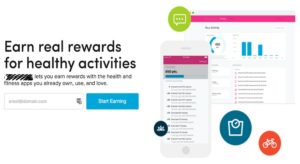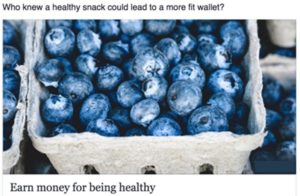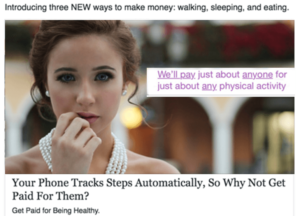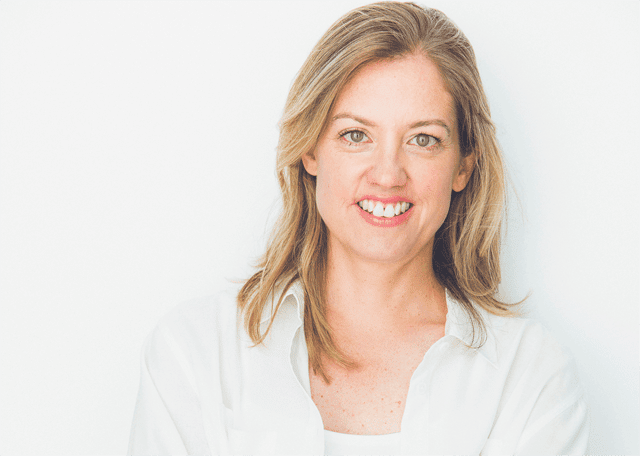This post was originally posted on Forbes.com on AUG 1, 2017. You can access the original post here.
Advertising on social is an ever-evolving area of customer acquisition. It’s increasingly challenging to acquire customers in a way that generates a positive return on investment (ROI). So, who’s really doing it right these days?

Lolly Wolly Doodle, a children’s apparel retailer, built their business on Facebook — and Emily Hickey was the company’s COO at its peak of social success. Since leaving Lolly Wolly Doodle, Emily built Instant Ad Copy to help advertisers quickly and effectively launch social ads. And, when she isn’t speaking at national retail conferences, like the upcoming GrowCommerce, she’s consulting with retailers on how to profitably acquire customers on social channels like Facebook and Instagram.
I sat down with Emily to learn what it takes to acquire customers on social.
Veronika: When you are consulting for clients today, which social channels have you found perform the best and why?
Facebook is the most powerful ad platform in existence—it has huge numbers of engaged users across numerous target markets, along with incredible targeting and affordability. It also lets you advertise directly in your target market’s Facebook feed. All this creates ample opportunity to acquire customers cheaply.
The strategy has to be direct response advertising—finding the right image that makes customers stop, writing awesome copy that makes people click, figuring out highly effective audience targeting, and optimizing landing pages, email capture, average order value (AOV), and email marketing.
Veronika: People often say Facebook is no longer a profitable acquisition channel, but that’s clearly not your experience. What’s your secret?
The two most common scenarios we see when people say Facebook doesn’t work are:
1. Clients tried using an agency, or two, who didn’t work with the platform creatively or aggressively enough to see returns, so they simply gave up. We find agencies only focus on the ads and then they neglect other key parts of the sales funnel, particularly landing pages and email capture.
To understand how to optimize a Direct Response (DR) landing page, here is an example:

The original landing page was converting fairly well with some areas for improvement: ‘Earn’ sounds hard; ‘Rewards’ is ambiguous.

The revised landing page matched the language on the ad and addresses the ‘getting paid’ value proposition directly. Below the fold, we added press logos, testimonials and copy directly addressing key benefits and objections.The revised landing page overall converted 28% better.
2. Clients don’t fully understand, or aren’t comfortable with, direct response advertising. When we work with clients, we’ll brainstorm creative ideas to put in front of clients and decide what will really make people stop on their ad. Many times, we have to convince a brand to be more direct in its value prop, more proactive about addressing key objections, unconventional in its imagery, with a much more casual voice. Advertisers can’t use stock images. They have to scrap the marketing language and create a friendly voice their audience trusts. We convince brands to test ads that feel “off-brand” and use the data to inform their next decisions. While they may be appalled at the creative, they achieve unexpected results.
To understand how to optimize ad creative, consider this client case study:

This original ad used the blueberry image and more indirect marketing copy. It would have delivered ~28,000 sign-ups with the client’s ad budget.

The revised ad used more direct, colloquial copy, and an image totally unrelated to the brand, but the combination of elements is much more effective at making people stop and read. This ad produced over 500,000 qualified sign-ups with that same ad budget, making it 18x more effective.
Veronika: What tools do you use to define audiences, to post ads, and to measure results?
To define audiences, we start with the advertising tools provided by Facebook. The best performance comes from lookalike audiences on Facebook. In the Facebook advertising world, lookalikes are people who closely resemble your customers. You can find lookalikes on Facebook by uploading your email list to Facebook — Facebook then identifies similar audiences on Facebook based on a number of attributes. This approach is has the best performance, but only scales to around 1MM people. If you want to reach more than 1MM people, you’ll need to manually map what prospective customers like, what sites they visit, etc. and target based on those attributes.
Lastly, to measure results, we use Facebook’s native tools and our own offline reports—we’ll always pull numbers into our own formats, pivot tables, etc.
Veronika: What kinds of return on investment (ROI) are you seeing on Facebook?
Our target is to secure a minimum of 2x return on investment for our clients, meaning the advertiser makes twice the revenue invested in advertising. A client’s desired return on investment will ultimately depend on their average order value (AOV) and profit margin. In some cases, we need 3x-4x revenue returns on ad spend to make a campaign profitable.
The reality is that scale and return on investment can be at cross purposes. As you start to scale advertising, it’s hard to maintain targeting precision, so the return on investment will go down. Advertisers have to make a trade off between the speed of growth and how cheaply they can acquire customers.
Getting good results from Facebook advertising can be tricky, but it is not impossible. We hope these suggestions help improve your next Facebook campaign and make the entire process of Facebook advertising more accessible.
About the Author:
Veronika Sonsev is a Partner with Chameleon Collective where she leads the Retail Practice. In addition to developing the retail business for the company, she works with B2B clients in retail and digital media to help them accelerate revenue through strategy, marketing and business development. Prior to Chameleon Collective, Veronika founded and ran inSparq (acquired by Adiant Media), a software company that worked with some of the largest retailers and brands to market their trending products in real time. She has also held senior leadership roles at Jumptap (acquired by Millennial Media) and AOL, and has experience launching to international markets, building new business lines, and developing strategic partnerships. Clients rely on Veronika to help them develop strategies for growing their business, tell their story in a way that gets customer attention, and secure those all-important deals to help their businesses scale.
Veronika is an active advocate for women in business, and in 2009, she founded the global non-profit Women in Wireless, which now has over 12,000 members and 10 chapters around the world. Recognized as a thought leader and industry expert, Veronika has spoken at dozens of retail conferences, including Shop.org Digital Retail Summit, FashionDigital and Goldman Sachs dotCommerce Day, contributed to a number of business publications, such as Inc., Forbes, Business Insider, and Retail Touchpoints, and been interviewed by NPR, the Wall Street Journal, and TechCrunch. Her success as an entrepreneur combined with her support for women in the digital industry has led Fast Company to include her in its League of Extraordinary Women and TechWeek to name her as one of the Top 100 digital leaders in New York.
Veronika holds a B.A. in Economics and Russian Studies from American University and an M.B.A. from the Wharton School at the University of Pennsylvania. You can find Veronika on Twitter at @vsonsev and on LinkedIn at https://www.linkedin.com/in/vsonsev.



